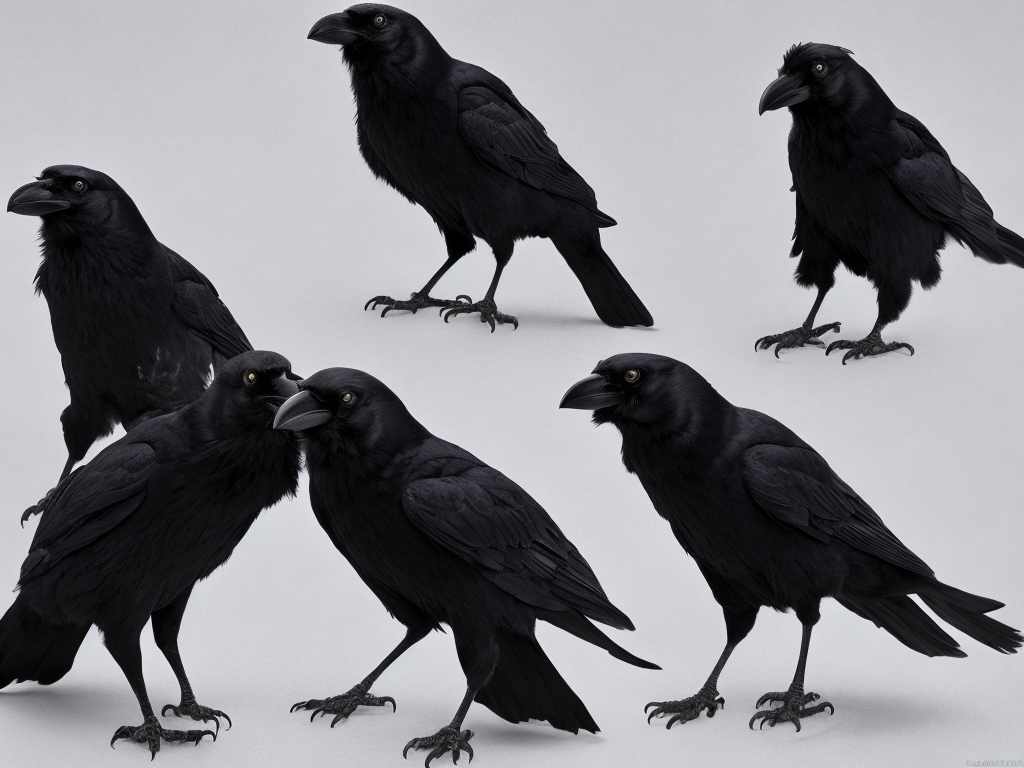
Crows and ravens are two of the most commonly seen birds in the world. They both belong to the Corvidae family, a group of birds that also includes magpies, jays, and nutcrackers. While they may look similar at first glance, they have many differences that set them apart. In this article, we will explore the difference between a crow and a raven.
Physical Appearance:
The first and most obvious distinction between crows and ravens is their physical appearance. Crow’s average height is around 17.5 inches, while ravens are about 24 inches tall, making the latter much larger and heavier. Ravens often have shaggy throat feathers, which makes their neck appear to have scruffy feathers. Meanwhile, crows have a smooth glossy texture to their feathers, and their necks are less dimensioned.
The size of their beaks is another physical difference between the two birds. Ravens have a longer and curved beak in comparison to a crow’s beak. The hooks in their beaks are stronger and more prominent, allowing them to feed on tougher items such as carrion and rodents. Crows have a straight beak and are omnivorous, meaning they consume a wide variety of food, including small birds, carrion, fruits, and insects.
Another difference between the two birds is their tail size and shape. Ravens have a pointed tail that fans out at the end, while crows' tails are square-shaped.
Habitat and Distribution:
Ravens and crows both have widespread geographic ranges, but they tend to prefer different habitats. Ravens are found in a broader variety of environments, including deserts, forests, mountains, and tundras. They are typically found in colder regions of the hemisphere, such as Northern America and Northern Eurasia.
Crows, on the other hand, live in a more varied environment, such as forests, grasslands, wetlands, coastlines, urban and suburban areas. Crows have a more significant distribution throughout the world, and they are found in North and South America, Europe, Africa, Asia, and Australia.
Behavior:
Crows are highly social birds and are known to form large flocks. They have an elaborate communication system, which includes a range of vocalizations like cawing, croaking, and screaming. Crows are intelligent birds and use tools and solve complex problems. Their memory and problem-solving skills are so advanced that they can remember human faces and recognize people who have been kind or unkind to them.
Ravens, too, are intelligent birds and have shown themselves to perform extraordinary feats of problem-solving and task-learning. They are solitary birds, and they tend to keep to themselves or with their mates, only associating in large numbers during migration or winter roosting. Ravens have a more extensive vocal repertoire than crows, and they are famous for their deep, resonant “cronking” calls.
Feeding and Diet:
Crows and ravens have similar diets, but they feed differently. Crows are omnivorous birds that feed on various items, including fruits, seeds, insects, small animals, carrion, and garbage. They commonly feed on the ground and may be seen digging worms out of the soil. They are also known to scavenge for carcasses along roads.
Ravens, on the other hand, are more scavengers than hunters and primarily feed on carrion. They are opportunistic feeders and will readily eat insects, small rodents, and fruit when available. They commonly forage in pairs or groups and may be seen following predators such as wolves, bears, or coyotes to feed on carcasses. They also have a habit of caching food to return to later on.
Symbolism:
Crows and ravens have different symbolism, and their place in various cultures is diverse. In some societies, crows are considered to be birds of bad omen, associated with death and darkness. According to a superstition, seeing a single crow is said to bring bad luck, while seeing two crows is believed to be a sign of good luck.
In contrast, ravens are seen as birds of magic, with a place in folklore and mythology. In Norse mythology, Odin, the chief god, was accompanied by two ravens, called Huginn and Muninn, meaning “thought” and “memory.” In some other cultures, such as indigenous peoples of North America, ravens are considered a symbol of transformation and change.
Final thoughts:
In conclusion, crows and ravens share many similarities, but they have differences that set them apart. Ravens are larger and more significant than crows, with a more curved beak, a shaggier neck, and a more extended and pointed tail. They are solitary, intelligent, and known for their deep resonant calls. Crows are more social, smaller and have a straighter beak, a glossier neck, and a less extended tail. They are omnivorous birds, highly adaptable, and experts in tool-making.
Both crows and ravens play an essential ecological role and are crucial to the balance of the ecosystem. By understanding the difference between them, we can appreciate the uniqueness of each bird and the role they play in nature.
 Self-Instruct
Self-Instruct